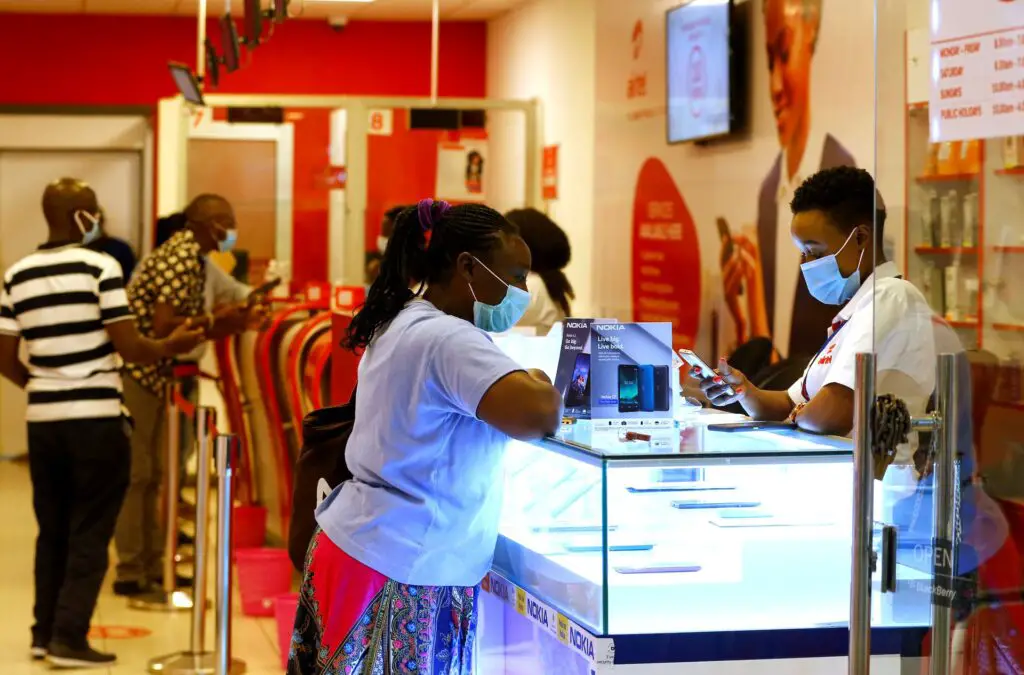- An infusion of new investments and regulatory transformations is shaping financial interactions and digital payments in Africa.
- Africa’s digital payments operations produced around $24 billion in revenue in 2020, comprising domestic and cross-border payments.
- For Africa’s digital transition to run smoothly, a cohesive environment that ensures investment and funding remains necessary.
Human commerce constantly seeks more efficient exchange mediums, and this innovation is currently intensifying. Consequently, how individuals pay for products and services has changed dramatically in the 21st century. Digital payments in Africa are gradually replacing cash, and cryptocurrencies and virtual currencies have lately emerged as substitutes for conventional money concepts.
Africa has kept up with, and in some instances led, technological advancement. An infusion of new investments and regulatory transformations is shaping financial interactions and digital payments in Africa. Cash remains king in Africa. However, research indicates that its dominance may be challenged in the future years as digital payments in Africa gain traction. Banks and nonbank actors work hard to eliminate domestic and cross-border payment inefficiencies.
As these stakeholders work to provide essential new solutions to consumers and companies, experts predict Africa’s domestic e-payments sector will grow by approximately 20 per cent annually, reaching over $40 billion by 2025. In contrast, global payments revenue will expand at a 7 per cent annual rate during the same period.
An Accelerated Shift toward digital payments in Africa
Digital payments are a thriving business globally, attracting more funding than any other financial services sector. Over the last decade, the industry has also generated the most significant returns and growth. Africa is no different. Africa’s digital payments operations produced around $24 billion in revenue in 2020, comprising domestic and cross-border payments. Local digital payments contributed around $15 billion.
However, only 5 to 7 per cent of all Africa’s financial transactions happen electronically or digitally. This implies that digital payments in Africa provide a significant opportunity for growth, particularly as payment systems’ efficiency and scalability improve and corresponding infrastructure expands.
Since the turn of the century, digital payments in Africa have evolved exponentially. They did, however, make more significant progress during the COVID-19 epidemic. As a result, several African nations have seen increased digital payments during the last two years. According to the Central Bank of Nigeria, mobile-money transaction volumes in Nigeria more than doubled to about 800 million by 2020. Furthermore, data from South Africa suggests that digital transactions increased by almost 40 per cent during lockdowns in 2020 and 2021.
According to experts, the trend toward digital payments in Africa will continue and intensify. Experts predict that between 2020 and 2025, the e-payments sector will expand by around 150 per cent, reaching almost $40 billion in revenue from domestic payments alone—approximately 188 billion in transaction volumes.
However, growth will most certainly remain uneven throughout the continent. Growth rates in different markets will be determined by infrastructural readiness, e-commerce reach, mobile-money penetration, and regulations, among other things.
READ MORE: South Africa, Nigeria trail Kenya in digital & P2P payments
Factors influencing growth outlook for digital payments
Economic growth, favorable demographics, technological innovation, and developments in payment infrastructure can work together to shape the future of digital payments in Africa. An additional force, the effect of fresher disruptions, including blockchain, cryptocurrencies, and open banking, remains harder to predict.
A youthful population and robust economic fundamentals
Young, urbanized consumers and strong economic fundamentals have provided fertile ground for the growth of digital payments in Africa. Africa has the world’s highest population growth rate and the youngest median age, at 20 years. By 2045, most of Africa’s young people likely settle in cities. In Africa, a youthful, urban population offers a ready market for digital payments. As a consequence, growth is already evident in how people travel (e-hailing services), consume entertainment (streaming services), and shop (e-commerce).
Fundamental economic growth indicators and falling data costs continue to boost digital payments. African economies have demonstrated consistent signs of recovery from the economic hardships caused by the COVID-19 pandemic. Governments throughout the continent have sought to prioritize internet and mobile phone adoption in the face of dropping internet and mobile phone prices.
Cell phones have become almost omnipresent in the African culture. Teenagers and young adults are passionate about smartphones and carry them almost everywhere. According to the World Bank and the African Development Bank, Africa has over 650 million mobile phone subscribers. With smartphones representing up to 64 percent, in some African countries, more people have access to mobile phones than to clean water, a bank account, or electricity.
Adoption and penetration of alternative payment methods
Technology has advanced in tandem with innovation. African consumers continue to benefit from the expansion of alternative payment options throughout the continent. Local and international financial and telecommunication companies have accelerated this penetration. According to the GSMA, there were 1.2 billion global registered mobile-money accounts in 2020, approximately equal to Africa’s population.
Over $2 billion in daily transactions were handled, amounting to more than 40 per cent of Africa’s GDP. International remittances processed using mobile-money wallets increased by 65 per cent year on year in 2020, reaching about $1 billion, with little sign of stopping. Digital wallets connected to various payment methods, such as cards, accounts, and mobile money, have also risen in use and availability.
Consumer and merchant interactions have also eased through new and innovative technology. For instance, integrated universal QR codes, such as those funded or produced by central banks or similar agencies, have helped minimize complexities as digital payments in Africa continue to expand.
For example, Ghana’s Quick Response Service (GHQR) accepts payments from banks, mobile money, and cards. The NQR offers a comparable solution in Nigeria. Meanwhile, interoperability between competing mobile wallets has been achieved in most countries.
Payments infrastructure is reducing friction and boosting integration

Regarding domestic payments, Africa has seen an expansion in real-time payments infrastructure, allowing instant account-to-account transfers. A few nations continue investing in new rails or renovating old ones with cutting-edge technology. Nonetheless, by the end of 2021, only six countries had implemented real-time payments.
According to a recent ACI analysis, Nigeria already ranks in absolute terms in the top 10 worldwide real-time transaction rankings. Kenya is also one of the nations predicted to have the highest rise in real-time payments in the coming years. Egypt has instant payment legislation, while Ghana has just implemented instant payments. Tanzania and other developing nations are attempting to catch up.
In Africa, central banks, regulators, or bank organizations have mostly spearheaded investments in real-time payments infrastructure, concentrating on domestic payment systems. Endpoints have also been merged across nations by a new breed of fintech and other companies. As a result, they have quickly created contemporary railroads to allow quicker and less expensive intra-Africa cross-border payments. These solutions will continue to expand across more regions and payment methods in the coming years.
Under the AfCFTA, the Pan-African Payment and Settlement System (PAPSS) intends to alleviate payment obstacles across Africa’s complicated network of more than 50 nations and 40 distinct currencies. The PAPSS represents a potentially game-changing initiative for cross-border payments in Africa. Simultaneously, regional initiatives such as the SADC RTGS have helped advance transactions in regions that would have previously needed more expensive and complex correspondent banking arrangements and counterparties outside of Africa.
The crucial role of offline channels
Considering the enduring dominance of cash in Africa, offline channels, particularly agent networks, represent another critical component of Africa’s digital payments infrastructure. These networks expanded beyond cash-in, cash-out (CICO) services with the introduction of mobile money in the late 2000s. They have grown in complexity and size to support digital payments and serve as a distribution channel for financial services.
Non-telecom agent systems with more than 100,000 access points include SANEF in Nigeria, Mukuru in Southern Africa, and Fawry in Egypt. For banks, these networks, with their lower operating costs, have become a critical channel for customer acquisition and servicing, enabling access to a new segment of customers.
Blockchain and cryptocurrencies
Despite reservations about private cryptocurrencies, Africa has seen an upsurge of disruptive innovation supported by regulations and central banks. Over 10 African nations have considered implementing central bank digital currencies (CBDCs). The potential use cases of CBDCs make sense for some of the most persistent complications with payments and transactions in Africa.
Furthermore, the value of various privately issued stablecoins continues rising. Experts have proposed several techniques to keep stablecoins pegged to a unit of fiat money. However, the most enduring stablecoins will probably remain reserved by cash deposits. In that scenario, more consumers will use tokenized cash for international and corporate payments. This allows them access to the benefits of cryptocurrency. The advantages include quick settlement, cost-effective transactions, better security, and transparency.
The impact of blockchain and cryptocurrency remains uncertain. Cryptocurrencies, stablecoins, and CBDCs, on the other hand, will significantly impact the prospects for digital payments in Africa. The prospective use cases for cryptocurrency underscore Africans’ historical tendency to embrace large-scale innovation and leap forward into the future.
For Africa’s digital transition to run smoothly, a cohesive environment that ensures investment and funding remains necessary. This will help close the digital infrastructure gap in Africa, through available, affordable, and secure internet across demographics and geography.











